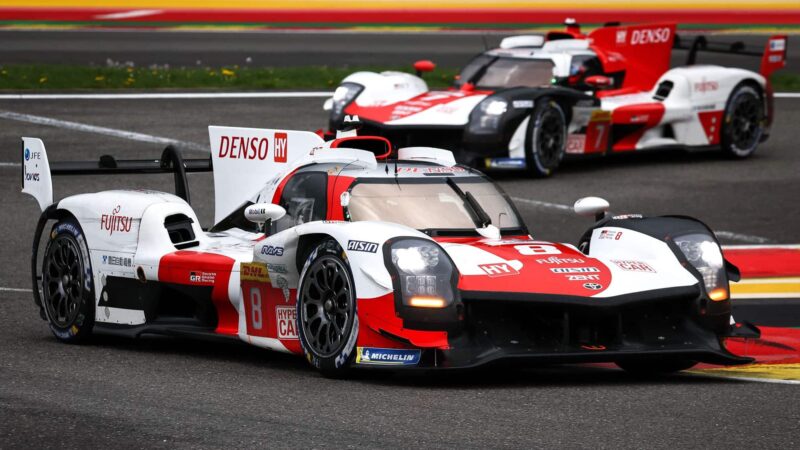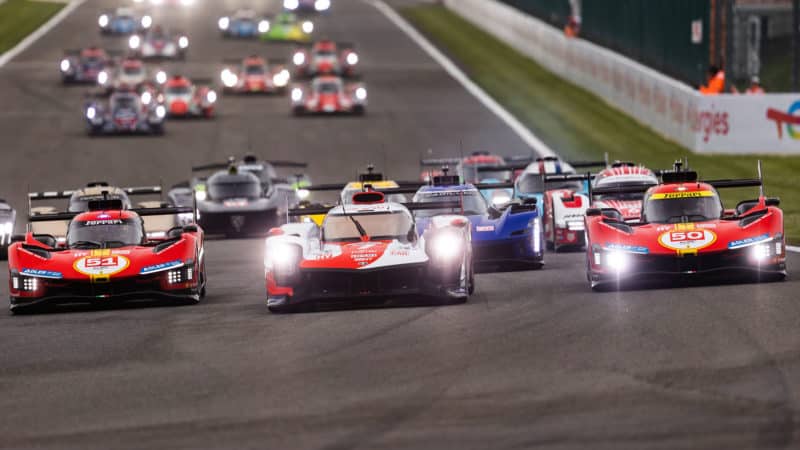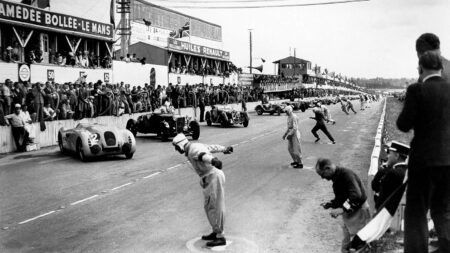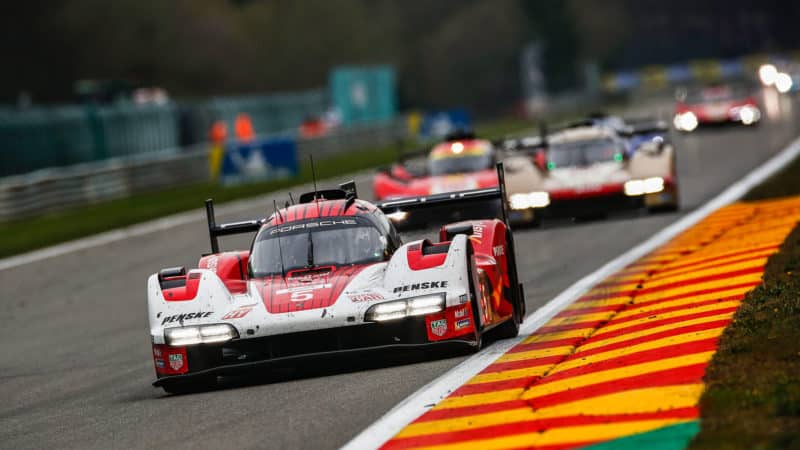But it also explained why the Ferrari flew in Calado’s hands over the final two stints on a single set of tyres. The Briton came back from nearly a minute down on Frederic Makowiecki’s Porsche 963 LMDh over the course of the final hour. The team predicted that his pace would bring him up to the Penske-run Porsche the Frenchman shared with Michael Christensen and Dane Cameron on the very last lap. It was spot on: Calado was level with the Frenchman at the end of the Kemmel Straight and breezed around the outside at Les Combes to take Ferrari’s third podium of the season and a first for the No51 entry.
“It seemed that we made a step forward this weekend,” said Calado. “The positive thing as well as the podium is that were on a close pace to Toyota. Without the little things that went wrong, we could maybe have given them a fight.”
The little delays of which Calado talked were a pair of so-called emergency stops when the race was neutralised and the pits were closed. One was to replace a damaged wheel and deflating tyre, the other for a five-second dump of fuel when a full tank was actually required.

It may have lacked pace at times, but Toyota’s overall brilliance was demonstrated by 1-2 finish
Toyota
The sister car shared by Nicklas Nielsen, Miguel Molina and Antonio Fuoco had a much bigger problem, though one any of number of drivers were happy to say was not of Ferrari’s making. Fuoco spun on cold tyres straight out of the pits early in the fourth hour. The ban on tyre heaters, deemed dangerous by many, was a hot topic of conversation over the Spa weekend.
So too was the Balance of Performance. Spa, round three of the 2023 WEC, was the first opportunity for a pre-Le Mans revision, though only to the balance between the LMH and LMDh machinery that come together in the Hypercar class. What is known as the platform BoP was left alone, though the question now is whether it can still change before the race that really matters.




